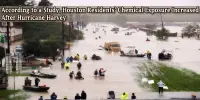As diverse as the library is, books on climate change tend to fall into one of two types. There are field guides and observational accounts that document the deterioration of our planet and make it understandable to readers all across the world. There are policy and technology evaluations that play out future options, debating tradeoffs and advising individuals and governments on their choices. There are historical accounts of squandered opportunities, as well as geological accounts of what our earth was like over the eons. Then there’s a dystopia, which is a far darker genre.
Dystopic future scenarios are compelling precisely because they are visions. That makes them easy fodder for climate fiction (“cli-fi”) novels and even video games like Final Fantasy VII, a stream of work that has accelerated much like carbon in the atmosphere has. Despite this, it’s a field that’s almost singularly centered on the imagination, on “what if” scenarios, and bringing them to a dramatic climax. The fact that “How Everything Can Collapse: A Manual for Our Times” is both dystopic and non-fiction makes it a unique read.
The book, which was first published in French in 2015 and was translated into English last year, advocates for a firm embrace of what the authors, Pablo Sevigne and Raphael Stevens, call “collapsology.” Collapsology is concentrated on multidisciplinary and methodical research of the state of our globe, civilization, and society, and is less a movement like the Extinction Rebellion and Deep Adaptation communities that have grown up in the Anglophone world. They reject the American view of development and technological advancement as solutions to problems, as well as humanity’s intrinsic yearning to see a better world in the future.
Instead, they want to know what is actually going on right now, and whether the strains, shocks, and crises that bombard our consciousness on a regular basis are really a mirage or a far more profound phenomenon. It shouldn’t be difficult to figure out what their response is. Servigne and Stevens hunt for tipping points, physical limits, and other impenetrable impediments to society’s exponential progress by walking across earth systems such as energy and food production, among others. Of course, what they discover is alarming. Over the last century, exponential human population increase has resulted in a nearly insatiable demand for every resource and nutrient the world has to offer.
Many of us are familiar with this story, but the part that gets interesting is when they start to look at what that demand has done to efficiency. The history of petroleum and the Energy Return on Energy Invested, or the amount of oil and gas required to drill for that resource, was perhaps the most spectacular illustration they provided. They point out that ERoEI has decreased from 35:1 in 1990 to around 11:1 presently. Fuel is becoming increasingly difficult to come by, which means we must spend more fuel to drill for less fuel. It’s a negative feedback loop — and an exponential one at that — and there’s no reason to think things will change.
















